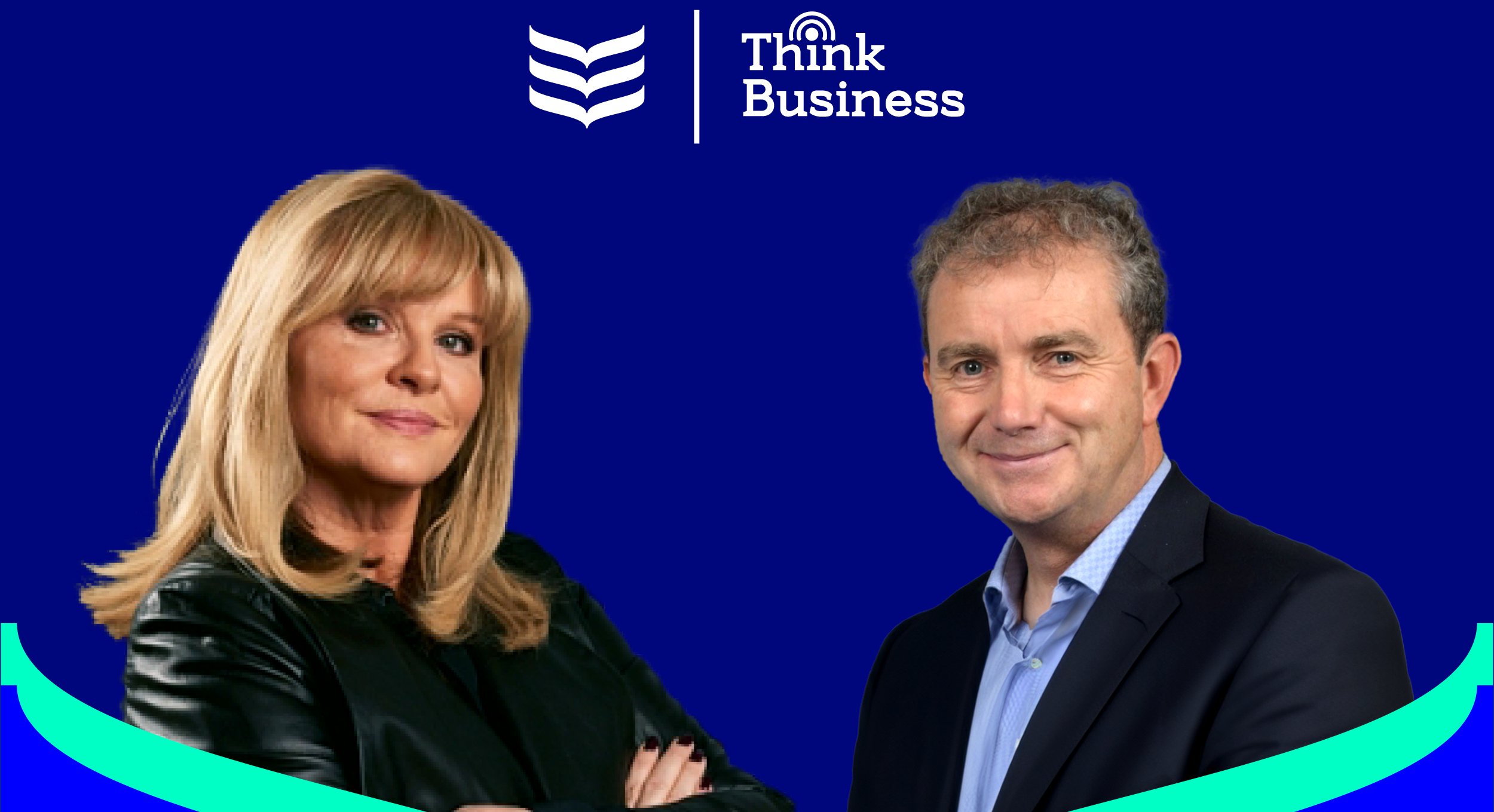Podcast: International cyber psychologist Prof. Mary Aiken and Bank of Ireland’s head of Fraud Nicola Sadlier reveal the sophisticated tactics behind today’s digital scams and offer guidance on staying protected.
The numbers are staggering. International scammers stole over $1 trillion in a 12-month period according to the 2024 Global State of Scams report. When researchers expanded their study in 2025 to survey 46,000 adults across 42 markets, they discovered that 57% had encountered a scam in the past year, with 23% losing money.
“These figures are reasonably consistent with Irish figures,” says Professor Mary Aiken, an international cyber psychologist who works in an advisory capacity with Interpol and Europol. “The report raises serious concerns about generative AI and the use of what’s called Dark AI, where cyber criminals generate scripts, videos, or even clone voices at very low cost to target wide groups of people.”
“Cyber fraud isn’t just about hacking a machine – it’s a hack of the human mind”
For Irish consumers, the threat has evolved significantly. Nicola Sadlier, Head of Fraud at Bank of Ireland, has witnessed this shift firsthand. “We’ve seen a move away from text messages, phone calls and emails. Increasingly, it’s now scams originating online,” she explains. Bank of Ireland’s annual survey reveals that four out of five respondents are on social media daily, creating increased exposure to online scams.
The Christmas shopping trap
As Black Friday, Cyber Monday, and the Christmas period approach, two types of scams dominate the landscape: purchase scams and investment scams. Purchase scams particularly target fashion retailers and ticket sales, capitalizing on high demand for popular events.
“We saw significant activity during the summer with popular gigs like Oasis, where customers were actively searching to secure tickets through high demand,” Sadlier notes. “Through social media and fake advertisements, customers have been caught out. This starts through search engines with fake websites, and also through ads appearing in customers’ social media streams.”
The pattern is disturbingly consistent. Customers reach out through direct messages or visit fake websites, conduct transactions or agree on prices, then discover they’ve been scammed. “We had numerous examples during the summer where customers paid upfront around 100 euros, and immediately once payment was made, the seller cut all contact,” Sadlier explains. “Unfortunately, we’re then trying to recover those funds for the customer.”
The mind game behind the scam
Professor Aiken, who describes herself as a cyber behavioural profiler, explains that today’s fraudsters are “professional manipulators” who pair psychological social engineering with online tools. “Cyber fraud isn’t just about hacking a machine – it’s a hack of the human mind. Criminals target psychological vulnerabilities in our cognitive processes, judgment, heuristics and decision making.”
These psychological triggers are carefully deployed. The urgency or scarcity heuristic creates pressure with phrases like “only two left at this price” or “last one,” making people feel they’ll lose an opportunity if they don’t act immediately. The authority heuristic exploits our tendency to comply when something appears official, whether it looks like communication from a bank manager, social services, or revenue department with authentic-looking logos.
“Then you have curiosity and novelty effects with attractive clickbait proposals, especially on social media,” Aiken continues. “Finally, there’s cognitive overload, where platforms offer so many complex options that you get confused and just click to purchase.”
Celebrity endorsements and investment traps
Investment scams represent another significant threat, often featuring cloned celebrity identities endorsing fake financial products. Sadlier recounts a particularly concerning case: “We had one involving David McWilliams where a customer clicked through, shared their initial information, and quickly received a call from what appeared to be a financial advisor but was actually a fraudster.”
The manipulation was methodical. The customer was initially encouraged to make a card payment of €250. Within a week, they received another call claiming their investment had doubled and they needed to invest more. “They were actually in a local branch trying to initiate a payment of €16,000 when our fraud team intervened,” Sadlier explains. “Once we understood it was linked to their online research, we were able to stop the payment.”
The psychology behind celebrity endorsements exploits multiple trust mechanisms. “You have a propensity to trust because that celebrity or expert might be considered an authority for the product they’re offering,” Prof. Aiken explains. “If you’re a fan of someone who appears to be offering a product, you get what’s called in psychology a ‘halo effect’ – if David McWilliams is a brilliant financial expert, then he must also be brilliant at offering other financial products.”
The technology of deception
Modern scammers employ increasingly sophisticated tools. Deep fakes create extremely authentic videos where it appears the actual person is speaking. “Everyone has seen those Tom Cruise deep fakes that are extremely authentic,” Prof. Aiken notes. Beyond deep fakes, criminals use stitched and edited clips, combining legitimate footage with fraudulent offers, plus fake quotes, interviews, and screenshots.
The results can be devastating. “Recently, in romance fraud, there were cases where someone believed Jennifer Aniston was their girlfriend and sent money, and another where someone believed Brad Pitt had fallen in love with them,” Prof. Aiken reveals. “The ability to fool people in cyber contexts using digital and synthetic media is quite high.”
Why smart people fall for scams
The Global Report on cyber scams revealed a surprising finding: a very high percentage of scam victims actually had university degrees. “This challenges assumptions about digital literacy,” Prof. Aiken observes. Two primary demographic groups emerge as targets, each vulnerable for different reasons.
“You have 18 to 25-year-olds who are extremely tech literate with incredible skills, but they’ll hop from website to website to try to get 10 dollars off sneakers. Many aren’t discerning about where their data ends up – credit card details, phone numbers, addresses on these sites. They can be careless with their data regarding strict cyber security protocols.”
“Then you have seniors who are very careful with their data and have well-established concepts of privacy, but may not have the digital literacy skills of the younger generation. So demographically, we see attack and success in two different age groups, but for very different reasons.”
The problem extends beyond individual incidents. “We’re seeing convergence – people who’ve been targets of romance scams then falling victim to investment scams and then investment fund recovery scams,” Prof. Aiken explains. “At law enforcement level, the thinking is that organized crime groups are sharing data of prototypical victims. If you’ve been the victim of one scam, be very careful – your data might now be in the wrong hands.”
The trust paradox
Our brains evolved over hundreds of thousands of years to establish trust in real-world contexts using all our senses – visual perception, auditory perception, touch, smell. “If you meet a mortgage broker, how do you feel about them after the first face-to-face meeting?” Prof. Aiken asks. “Online is a very lean medium for our senses – we can’t use those senses the same way.”
The complexity increases with generative AI and synthetic content. “Think of having ChatGPT with its power pointed at you, but trying to scam you instead of help you – it’s a very powerful entity,” Prof. Aiken explains. This creates what she calls “the trust paradox” – moving toward a premise of “zero trust, always verify,” especially for investment scams. “The paradox is that zero trust, always verify, paradoxically helps to build trust in cyber contexts.”
The Irish experience
Ireland has not escaped this global trend. “We’ve seen an increase in these types of scams, particularly over the last 18 months,” Sadlier confirms. “Increasingly, customers are failing to identify fake ads and getting caught.” Despite this, Bank of Ireland’s survey results show overconfidence, with 71% of respondents believing they could identify fake ads on social media.
The bank’s fraud team operates 24/7 to recover funds and contact beneficiary banks, but often discovers that victimized customers are subsequently retargeted. “We step up our support with follow-on case management, ensuring additional safeguards around their social media presence and blocking phone numbers,” Sadlier explains.
Protection strategies
Experts recommend several protective measures. “Do research, look on comparison websites, go to trusted websites,” Sadlier advises. “Don’t be redirected or click on links bringing you to alternative websites – they can be copies of original websites.” For larger purchases, try to see items in person. For investments, consult with an independent financial advisor.
Technology can help. Bank apps offer spend alerts that should be activated to track credit, debit and payments. Since 9 October, new regulations include verification of payee checks, displaying the payee name when making payments. “Take time if it isn’t what you expected, don’t rush, and walk into a branch or call us if you’re suspicious,” Sadlier recommends.
The key approach is “stop, think, check” – validating before proceeding with any transaction.
The bigger picture
“Fraud is as old as humanity,” Prof. Aiken notes. “We’ve always had people trying to trick others to part them with their money or assets.” From the “sucker lists” of the 1920s passed among real-world criminals, to door-to-door salesmen in the 1960s, lottery scam calls in the 1980s, and “royal prince” emails in the 2000s, fraud has simply become more sophisticated.
The solution requires what Prof. Aiken calls “a whole-of-society approach.” This includes individual awareness of digital footprints and social media trace evidence, business-level support like Bank of Ireland’s customer protections, and government regulation and best practice.
Bank of Ireland has proposed policy changes requiring verification processes for financial services advertising. “Any financial services product advertising should be vetted and verified with local authorities – that’s not happening currently,” Sadlier explains. “Customers are falling victim because advertising is misleading, sponsored, and appears as top search results, but hasn’t been verified for authorization to sell those financial services.”
The Bank has invested €50 million in prevention activities and team expansion in 2024, with €15 million being new investment. The Government is also assessing introducing SMS scam filters proven effective in other countries.
A red flag to remember
Prof. Aiken offers one crucial warning sign: “If an offer comes through a very specific channel like social media where you click and go down a rabbit hole of a particular offering, ask yourself – if someone was really offering something legitimate, wouldn’t it be on their website, on more general channels, on traditional media?”
The difference between real-world and online advertising standards is crucial. “People have trust in real-world advertising – if you see a billboard or TV commercial, you think it’s passed some level of scrutiny. But that doesn’t happen online,” Prof. Aiken explains. “Not all advertising is what it seems, and that’s very important for people to understand.”
As Ireland’s digital landscape continues evolving, the message is clear: vigilance, verification, and the “stop, think, check” approach remain the best defences against increasingly sophisticated online fraud.
Resources for help
If you’ve been a victim of fraud, immediately contact Bank of Ireland’s 24/7 fraud helpline at 1800-946-764 or visit your local Garda station. For support if impacted by fraud, contact Crime Victims 24/7 helpline at 116 006. Additional fraud prevention information is available at Bank of Ireland’s Security Zone Security Zone – Bank of Ireland Group Website
-
Bank of Ireland is welcoming new customers every day – funding investments, working capital and expansions across multiple sectors. To learn more, click here
-
For support in challenging times, click here
-
Listen to the ThinkBusiness Podcast for business insights and inspiration. All episodes are here. You can also listen to the Podcast on:
-
Spotify
-
SoundCloud
-
Apple





